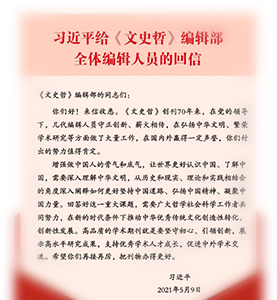马克思的“世界历史”和“世界历史民族”思想及其中国边疆研究意义——从“生产方式”的三种含义说起
宋培军
黑格尔意义上的“世界历史民族”的发展有主辅两条线,而马克思《政治经济学批判·序言》展现的生产方式序列是个人生产力发展作为“历史动因”在温带亚欧大陆这一时空维度上的“世界历史民族”主线。“世界历史民族”的形塑应该包括两种意义上的社会存在,一个是经济基础,另一个是社会基础,而不能局限于等同于前者的社会物质生产力。马克思通过“亚细亚的生产方式”这一文明史起点的创设,超越了黑格尔把波斯作为“世界历史起点”而把印度、蒙古乃至中国排除“世界历史的局外”这样的“地中海中心论”预设,并且把西方“陪伴着历史”的时段延伸到“东方从属于西方”的资本主义大工业的现代时期,进而揭示了“边界”地带对于大国史、全球史的世界历史意义。“游牧的生产方式”对“亚细亚的生产方式”构成黑格尔意义上的世界历史的“陪伴”关系,它把马克思的“红金主辅线历史观”形象地描画、铺展在中华大地上,其与西欧道路所呈现的世界历史民族主线序列有所不同,但并不自外于唯物史观的基本原理和马克思的生产方式序列。
Marx’s Ideas on “World History” and “World-historical Nationalities” and Their Significance to China’s Frontiers Research
Song Peijun
In the sense of Hegel, the development of “world-historical nationalites” has two lines of the principal and the auxiliary, while a sequence of mode of production Marx showed in “Preface” of Critique of Political Economy is the principle line of “world-historical nationalities” that individual productivity acts as “historical agent” in the time-space dimension of temperate Eurasia. The shaping of “world-historical nationalities” should contain social existences in two significances: one is economic foundation, and the other is social foundation; it cannot be limited to social productivity equating to the former. By the establishment of “Asiatic mode of production” as the origin of history of civilization, Marx transcended Hegel’s presupposition of “Mediterranean-centrism” which took Persia as the origin of world history, while excluded India, Mongol, and even China out of the world history; meanwhile, he extended the duration that the West “accompanying history” to modern times of large capitalist industries when “the East subject to the West”, and then revealed the significance of “border” zone to history of superpowers and global history in the sense of world history. In world history, the “nomadic mode of production” constructs an “accompanying” relation to the “Asiatic mode of production”. It visualizes Marx’s historical view of “red/principle line and golden/ auxiliary line” on the land of China. Though differing from the principal sequence of world-historical nationalities present by the West European path, it does not go beyond the rationale of Historical Materialism and Marx’s sequence of mode of production.


